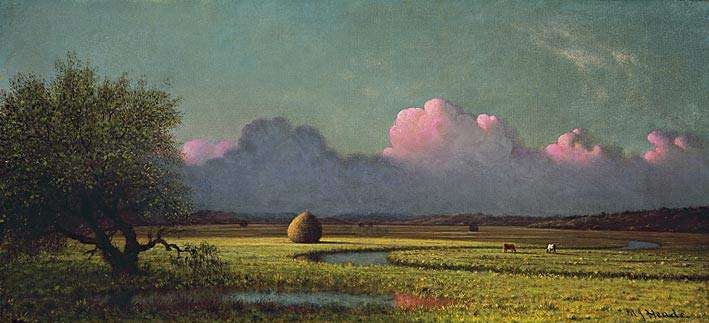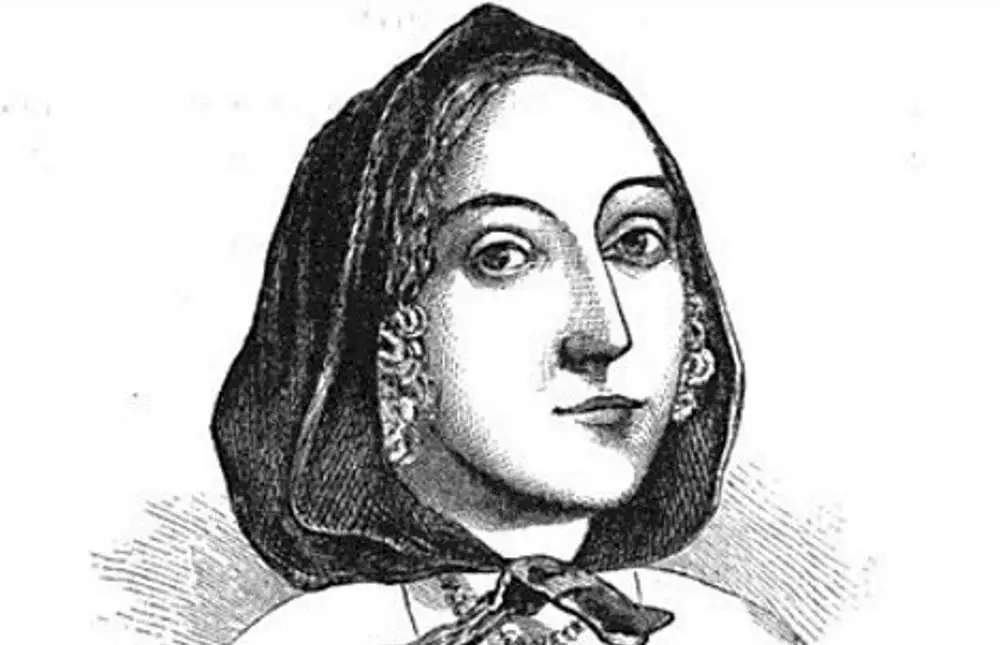Rebecca Rawson was a living morality tale for all Puritan New Englanders. But for vanity, she might have lived a wonderful life.

Rebecca Rawson (The American portrait gallery; containing correct portraits and brief notices of the principal actors in American history)
Rawson was born in 1656 in Newbury, Mass., to Edward and Rachel Rawson. Her father went on to become Secretary of the Massachusetts Bay Colony. He built a large estate and a family of nine children, who lived in relative luxury.
Local boys courted the beautiful Rebecca Rawson, and she could have had any one she wanted. However, when Thomas Hale arrived in Massachusetts, he caught Rebecca’s eye.
‘Sir Thomas Hale’
Hale said he was Sir Thomas Hale, nephew of the Lord Chief Justice in England. Rebecca and her family were impressed with the notion that she might marry a lord, and when he asked, she agreed. In July of 1679, Rebecca and Thomas married in a large wedding, he with a fancy suit and she with a silken gown. With her considerable dowry and personal belongings packed up, they set sail for England.

Sunlight and Shadow: Newbury Marshes by Martin Johnson Heade. National Gallery of Art.
Upon arrival in London, the exhausted couple spent the night at an inn. The next morning, Thomas went back to the docks to retrieve their trunks, which he promised to send to Rebecca. The trunks soon arrived, but with no keys to open them.
As the day wore on, and Thomas did not reappear, Rebecca had the locks forced and discovered the trunks emptied of any valuables.
Thomas Hale, she soon discovered, was Thomas Rumsey, a local con man who had preyed on naïve New Englanders before. Not only that, he already had a wife and two children.
Much to her dismay, Rebecca soon discovered she was pregnant with Thomas’s child. Embarrassed and penniless, Rebecca decided she would not return to New England. Instead, she found a home in London and for 13 years supported herself and her son as an artist and handywoman.
Port Royal
Eventually, her father wrote to her and urged her to return to Boston and live with him. Rebecca Rawson agreed. She set sail, first for Port Royal in Jamaica, and from there she planned to return to New England.
Port Royal was a lawless, pirate haven, rich in both money and sin. Rebecca’s ship arrived in June of 1692 and lay in port on June 7 when an earthquake struck. The earthquake killed 2,000 of the 6,500 people in Port Royal.

Port Royal sometime before 1692
Descriptions of the event recount the ground opening up and swallowing people, ships pushed ashore, houses collapsing and the cemetery flooding.
The harbor filled with the corpses of new earthquake victims and the long-buried dead.
Rebecca Rawson died in the earthquake at age 36.
Rebecca Rawson Recalled
Sarah Anna Emery in her Reminiscences of a Nonagenarian, recalled her story. Master storyteller John Greenleaf Whittier made her story the centerpiece in his fictionalized tale of New England life, Leaves from Margaret Smith’s Journal in the Province of Massachusetts Bay.

John Greenleaf Whittier
In it, he says of Rebecca Rawson:
“My grandmother, who affectionately watched over Rebecca, and comforted her in her great affliction, has often told me that, on coming to herself, her poor cousin said it was a righteous judgment upon her, for her pride and vanity, which had led her to discard worthy men for one of great show and pretensions, who had no solid merit to boast of. She had sinned against God, and brought disgrace upon her family, in choosing him. She begged that his name might never be mentioned again in her hearing, and that she might only be known as a poor relative of her English kinsfolk, and find a home among them until she could seek out some employment for her maintenance, as she could not think of going back to Boston, to become the laughing-stock of the thoughtless and the reproach of her father’s family.”
This story about Rebecca Rawson was updated in 2022.


14 comments
Ouch.
Ouch.
Very interesting!
Very interesting!
What a fascinating story. I wonder what happened to the Thomas Hale? Was he punished?
He was never seen again.
What a different culture that was, to blame the woman for tricking her and her family and stealing her possessions. And she died thinking God blamed her for that man’s lawlessness to the point he would call up an earthquake to punish her. Wow. I’m not sure if that qualifies more as devotion or egotism, to think a God would be so enraged at her over another’s actions that he’d kill thousands. Hmmmm.
Very interesting. Pride and vanity.
Her portrait hangs in the first floor of the New England Historic Genealogical Society. I’ve always been fascinated by this story!
I can understand wanting to disappear after being conned by the Englishman.
Really tough life for her.
History was always my favorite subject in grade school!and this is my favorite facebook page!
I would love to direct you and your readers to another account of this story, which corrects a lot of the mistakes and myths that have long been recounted in its telling. I sifted out what really happened versus John Greanleaf Whittier’s fictionalized account, by using original court records and other primary sources: “Abominable Villainy: The Cruel Deception of Rebecca Rawson,” pp. 46-53, in “Witches, Rakes, and Rogues: True Stories of Scam, Scandal, Murder, and Mayhem in Boston, 1630-1775, by D. Brenton Simons (Commonwealth, 2005). The original portraits of Rebecca Rawson and Edward Rawson are owned by the New England Historic Genealogical Society in Boston. Here is the portrait of Rebecca Rawson. Thanks, Brenton Simons
He preyed on New Englanders, not prayed.
Comments are closed.